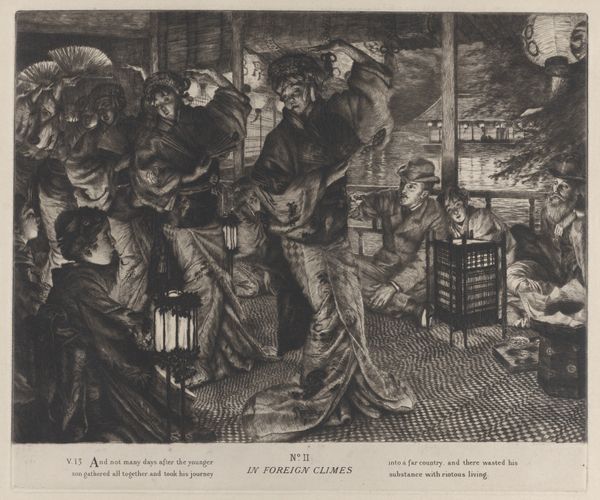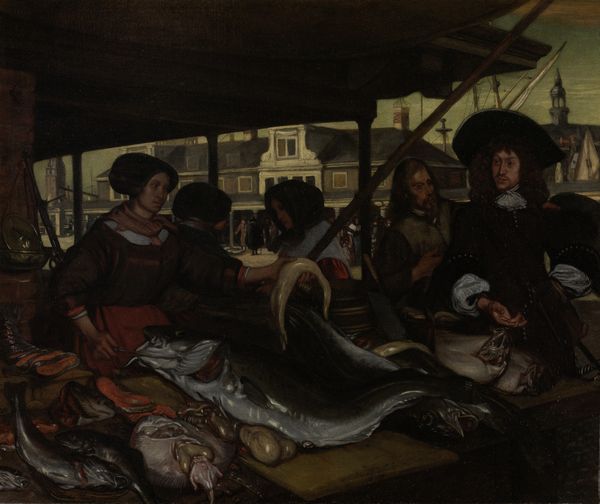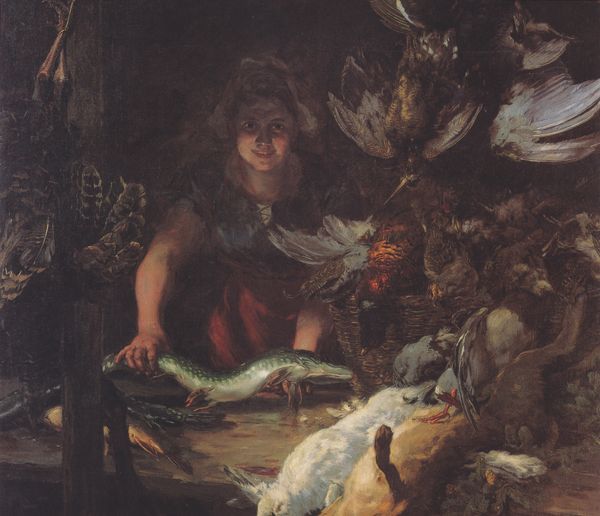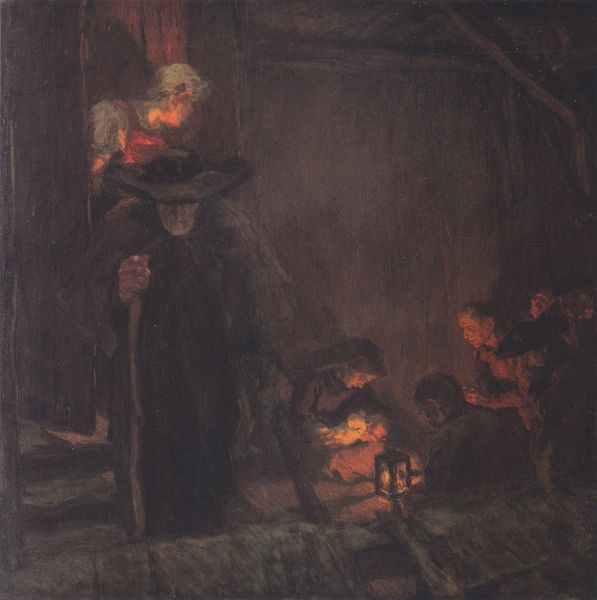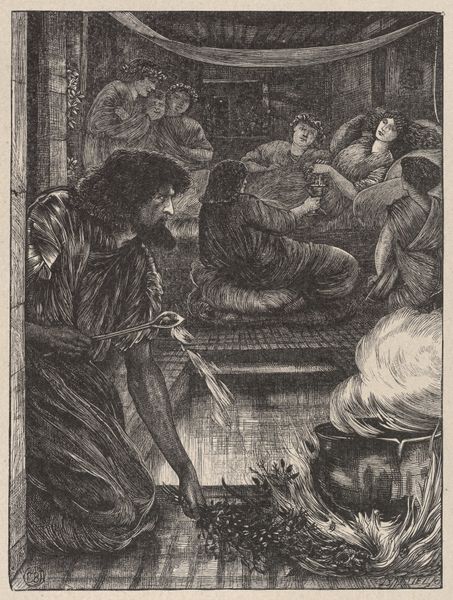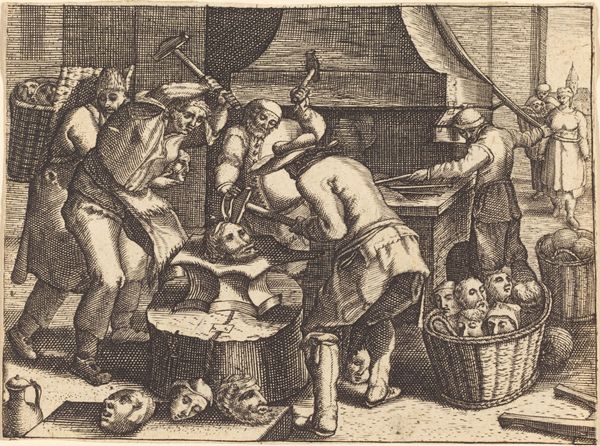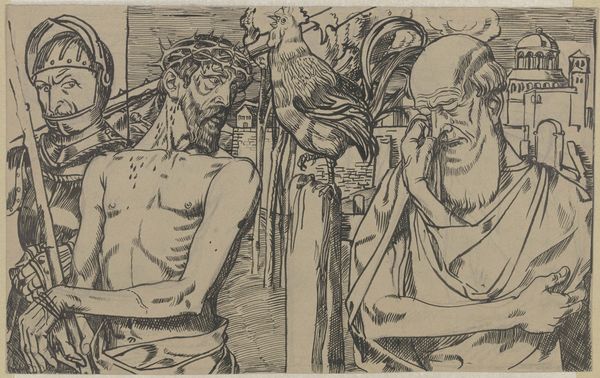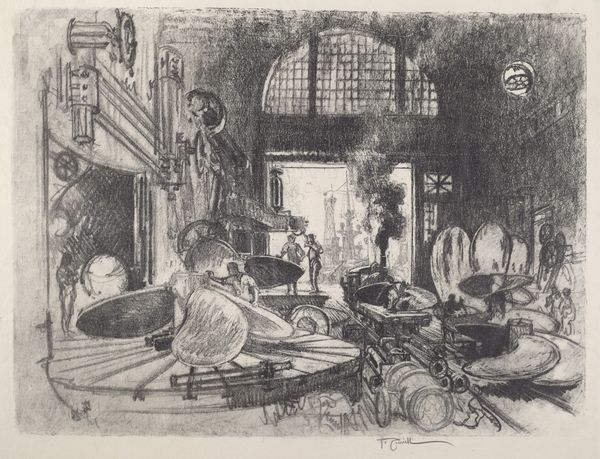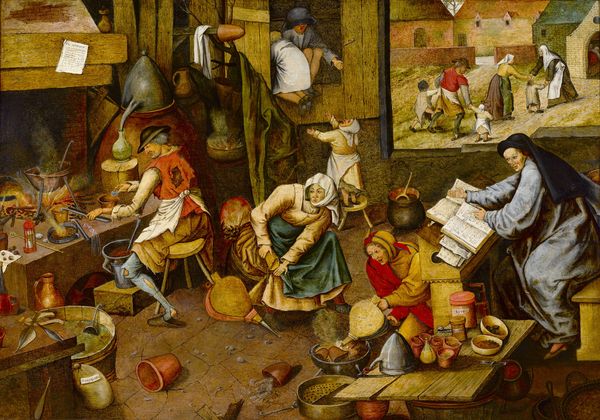
painting, oil-paint
#
narrative-art
#
painting
#
oil-paint
#
japonisme
Copyright: Public domain
James Tissot painted “The Prodigal Son in Modern Life In Foreign Climes” in the late 19th century, using oil on canvas. Here, Tissot transports the biblical parable to Japan, likely reflecting the growing Western fascination with Eastern cultures during this period. The painting presents a stark contrast between the revelry of the Japanese dancers and the contemplative, almost melancholic, expressions of the Western men observing them. This juxtaposition invites us to consider themes of cultural exchange, exploitation, and the exoticization of foreign lands. It implicitly critiques the colonial gaze and the moral ambiguities inherent in cross-cultural encounters. By setting this scene in Japan, Tissot challenges the viewer to question the universality of the Prodigal Son narrative. The artist implicitly questions whether its values apply across different cultural contexts. To fully understand this artwork, one might delve into studies of Orientalism and the social history of Western interactions with Japan during the late 19th century, exploring travel literature, political cartoons, and other visual sources.
Comments
No comments
Be the first to comment and join the conversation on the ultimate creative platform.
